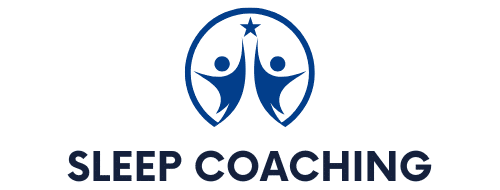⭐️ Verdict: Optimal recovery and performance tracker.
This WHOOP sleep tracker review dives into one of the most insightful health and fitness tools I’ve tested. Unlike other wearables that try to do everything, WHOOP focuses specifically on helping you optimize your recovery, sleep, and overall performance.
The continuous tracking is impressive—it monitors everything from your heart rate variability (HRV) to your sleep stages, and it gives you personalized feedback to help you make better decisions about your workouts and rest. What really sets the WHOOP sleep tracker apart is its focus on recovery. Each morning, it provides a recovery score based on your sleep, strain, and HRV, which helps you know whether you’re ready to push yourself or take it easy.
I’ve found the device itself to be super comfortable. It’s lightweight and screen-free, which I love because it doesn’t feel like a gadget strapped to my wrist 24/7. Plus, the fact that you can charge it while still wearing it is a huge bonus. The app is also incredibly user-friendly, with clean visuals that make it easy to track progress over time. One thing to keep in mind is the subscription-based pricing, which can add up, but for me, the level of data and insights makes it well worth the cost. If you’re someone who’s serious about improving your sleep and athletic performance, WHOOP is definitely a game-changer.
Pros
Accurate Sleep and Recovery Tracking
24/7 Continuous Monitoring
Unique Strain and Recovery Metrics
Comfortable, Lightweight Design
Low EMF Exposure
Cons
Subscription-Based Pricing Model
No Display or Lifestyle Features
Shorter Battery Life
Limited Customer Support Options
Minimal Aesthetic Customization
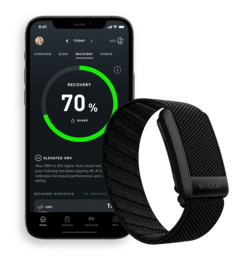
Overall Score
8 out of 10
Accuracy of Sleep Tracking
9 out of 10
Comfort & Wearability
8 out of 10
Battery Life
7 out of 10
App & Data Visualization Quality
9 out of 10
Price-Value Ratio
7 out of 10
Additional Features
9 out of 10
Durability & Build Quality
8 out of 10
Electromagnetic Frequencies (EMFs) Exposure
9 out of 10
Customer Support & Warranty
7 out of 10
WHOOP is a cutting-edge fitness and sleep tracker designed for athletes, wellness enthusiasts, and anyone serious about optimizing their health and performance. Unlike traditional wearables, WHOOP is focused on providing in-depth insights into your body’s recovery, strain, and sleep, offering a unique approach to health tracking. With no screen and continuous monitoring, the device delivers personalized feedback based on your daily activity, heart rate variability (HRV), and sleep patterns, helping users make data-driven decisions to enhance their overall well-being.
In a competitive landscape filled with devices like the Oura Ring, Apple Watch, and Fitbit, WHOOP stands out by placing a greater emphasis on recovery and strain metrics rather than general fitness tracking. By offering detailed sleep and recovery data, WHOOP is ideal for users who prioritize long-term health improvements and performance optimization, making it a top choice in the growing category of wearable recovery trackers.
Table of Contents
Accuracy of Sleep Tracking (9 out of 10)
When it comes to the accuracy of sleep tracking, WHOOP performs exceptionally well. It provides detailed insights into sleep stages (light, deep, REM), time spent awake, and overall sleep efficiency, making it one of the more advanced trackers on the market. WHOOP’s focus on heart rate variability (HRV) and respiratory rate helps enhance the accuracy of its sleep data, providing a deeper understanding of sleep quality and recovery. Compared to other devices, WHOOP’s continuous monitoring and data-driven algorithms place it among the top sleep trackers in terms of accuracy.
Competitors like the Oura Ring and Fitbit Sense 2 also offer robust sleep tracking, with Oura excelling in its sleep stage analysis and Fitbit offering a user-friendly breakdown of sleep patterns. However, WHOOP’s specialization in performance and recovery gives it an edge in delivering actionable insights tied to recovery and daily readiness. It’s not just about tracking sleep stages but also understanding how well your body is recovering, which WHOOP excels at.
For more insight into the accuracy of WHOOP sleep tracker functions, check out this video:
Given its comprehensive metrics and recovery-focused approach, WHOOP scores a strong 9 out of 10 for sleep tracking accuracy. While competitors like Oura may offer similar insights, WHOOP’s continuous monitoring and focus on recovery metrics make it a leader in sleep tracking for performance optimization.
Accuracy of Sleep Tracking Score: 9
Comfort & Wearability (8 out of 10)
In terms of comfort and wearability, WHOOP is designed with a minimalist and screen-free approach, making it one of the more comfortable options on the market. Its lightweight fabric band and adjustable fit ensure it can be worn continuously, day and night, without irritation. Since it lacks a screen, WHOOP’s design avoids bulkiness, making it less intrusive compared to bulkier fitness trackers like the Apple Watch or Garmin devices. This makes WHOOP ideal for users who want an unobtrusive device for sleep and fitness tracking.
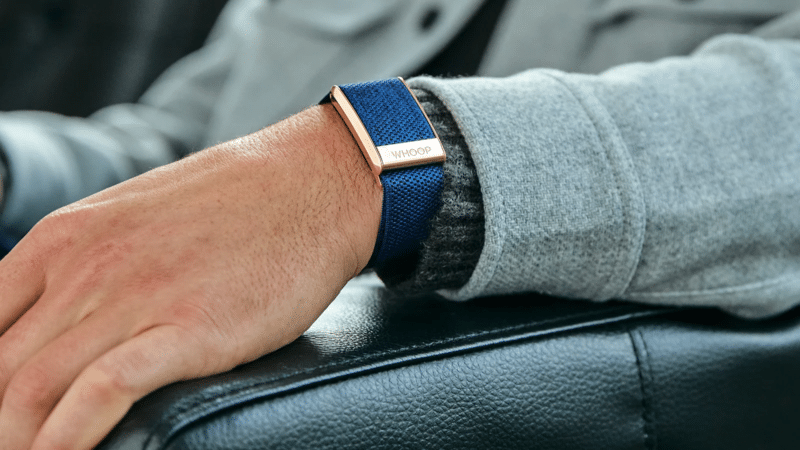
However, compared to devices like the Oura Ring, which offers a completely different form factor by being worn on the finger, WHOOP’s wristband design may not be as universally comfortable for everyone, especially those who prefer not to wear anything on their wrists while sleeping. That said, WHOOP’s breathable and waterproof material allows it to be worn comfortably during intense workouts and even in water, which is a significant plus for active users.
Taking into account its lightweight design, comfort for long-term wear, and versatility in various activities, WHOOP earns a solid 8 out of 10 for comfort and wearability. While it’s more comfortable than bulkier wrist devices, alternatives like the Oura Ring offer a different kind of comfort that may appeal to users who prefer minimal wrist wear.
Comfort & Wearability Score: 8
Battery Life (7 out of 10)
The WHOOP sleep tracker offers a battery life of approximately 4-5 days on a full charge, which is competitive in the wearable market. Its unique charging method—an attachable battery pack that allows users to charge the device without removing it—ensures that you can continuously track your sleep and activities without interruptions. This sets WHOOP apart from trackers that require removal for charging, such as the Apple Watch, which typically needs daily charging. For users focused on seamless tracking, WHOOP’s battery life provides a distinct advantage.
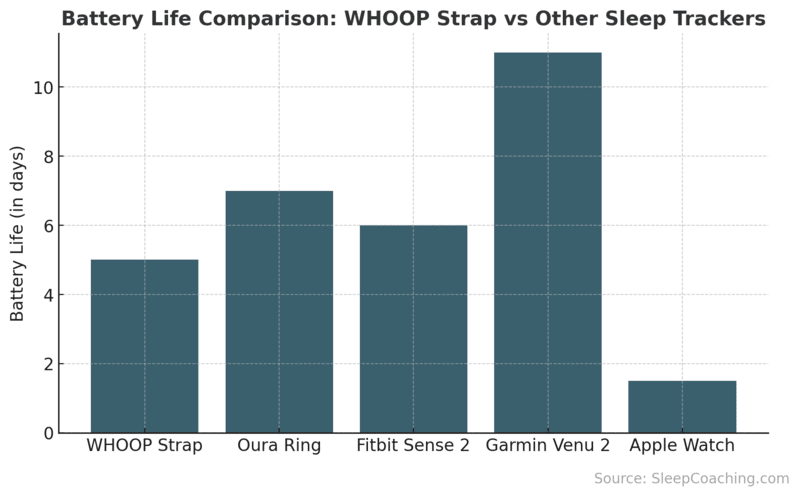
In comparison, the Oura Ring boasts a longer battery life of up to 7 days, while other fitness trackers like the Fitbit Sense 2 offer around 6 days depending on usage. Garmin’s devices, such as the Venu 2, also provide battery life in the 5-6 day range. While WHOOP doesn’t lead in battery longevity, its on-the-go charging system offsets the shorter lifespan, keeping the device consistently functional during sleep tracking and fitness monitoring.
Given its competitive battery life and innovative charging approach, WHOOP scores a 7 out of 10 for battery life. While it may not last as long as some competitors, the ability to charge while wearing the device offers an uninterrupted experience, making up for its slightly shorter battery duration.
Battery Life Score: 7
App & Data Visualization Quality (9 out of 10)
The WHOOP app offers an intuitive and detailed user experience, with data visualization that stands out for its clarity and depth. The app provides comprehensive insights into sleep, recovery, and strain metrics, presenting them in easy-to-read graphs and charts. Users can view daily, weekly, and monthly trends, giving them the ability to track long-term progress. WHOOP’s focus on actionable data—like its recovery score—sets it apart from general fitness trackers by helping users understand how well-rested and ready they are for the day. The app’s clear and informative interface makes it easy for users to interpret complex metrics.
Compared to competitors, the Oura Ring app is similarly polished, offering sleek visuals and robust insights into sleep stages and recovery, with an emphasis on simplicity. Fitbit’s app also provides a user-friendly experience, with colorful charts and accessible breakdowns of sleep, activity, and health metrics. However, WHOOP excels in giving personalized coaching tips and deeper data interpretation, particularly for athletes and performance-oriented users, which may be more advanced than what Fitbit or Garmin offers in their apps.
Overall, WHOOP scores a 9 out of 10 for app and data visualization quality. While the Oura Ring and Fitbit apps are also strong, WHOOP’s app is designed with a more tailored focus on recovery and performance, offering more detailed feedback and actionable insights that appeal to users looking for deeper health optimization.
App & Data Visualization Quality Score: 9
Price-Value Ratio (7 out of 10)
WHOOP operates on a subscription-based pricing model, which is different from most other sleep trackers on the market. The device itself is free with a monthly subscription starting at $30, offering access to the app, personalized insights, and continuous data monitoring. Over time, the total cost can add up, making WHOOP one of the more expensive options for long-term users. For serious athletes or health-conscious individuals who want in-depth insights into their recovery and performance, the data and analytics provided by WHOOP can justify the cost. However, for casual users, the ongoing subscription may feel steep compared to one-time purchase devices.
Here’s a graph we created which illustrates how much a customer will pay to track their sleep with some of the most popular sleep trackers on the market when the cost of the device and subscription to access full functionality are factored in based on general average pricing and subscription costs fore each device:

In comparison, trackers like the Oura Ring have a similar model with a one-time hardware purchase plus a monthly subscription for advanced features. Meanwhile, devices like the Fitbit Sense 2 and Garmin Venu 2 have an upfront cost without mandatory subscription fees, though they may offer premium features behind a paywall. These alternatives can feel like a better value for users who prefer paying once for the device and having basic features available without ongoing costs.
Considering the depth of insights WHOOP offers and its focus on performance, it provides value for specific users, particularly athletes. However, due to the recurring costs, WHOOP scores a 7 out of 10 in terms of price-value ratio. While the data is comprehensive and valuable, the subscription model may be less attractive for users looking for a one-time investment in their sleep and health tracking.
Price-Value Ratio Score: 7
Additional Features (9 out of 10)
WHOOP excels in providing additional features that set it apart from standard fitness trackers. Its core focus is on recovery, with features like heart rate variability (HRV), strain scores, and the unique recovery score that combines sleep and activity data to help users optimize performance. WHOOP also includes advanced respiratory rate monitoring and SpO2 tracking, which are valuable for understanding overall health. One of its standout additional features is the strain coach, which gives real-time feedback on how much strain the body can handle based on recovery levels. This performance-focused approach offers features that go beyond traditional sleep tracking.
Compared to other sleep trackers, WHOOP’s specialized focus on recovery and performance is more in-depth. Devices like the Fitbit Sense 2 and Garmin Venu 2 offer broader features, such as built-in GPS, contactless payments, and more lifestyle-oriented tools. However, their recovery metrics aren’t as advanced or personalized. The Oura Ring also offers impressive additional features, like body temperature tracking, but WHOOP’s strain and recovery scores remain more tailored for athletes and performance-oriented users.
To give you a clearer view, here’s a comparison of the key features between WHOOP and some of the top sleep trackers on the market:
| Feature | WHOOP | Oura Ring | Fitbit Sense 2 | Garmin Venu 2 |
| Heart Rate Variability (HRV) Tracking | Yes – Continuous, 24/7 | Yes – Nightly HRV tracking | Yes – HRV Tracking | Yes – HRV Tracking |
| Strain Score/Recovery Metrics | Yes – Detailed strain and recovery scores | Yes – Readiness score | No – Basic recovery insights | No – Basic recovery insights |
| Sleep Stage Monitoring | Yes – Comprehensive sleep stages (Light, Deep, REM) | Yes – Sleep stages (Light, Deep, REM) | Yes – Sleep stages (Light, Deep, REM) | Yes – Sleep stages (Light, Deep, REM) |
| SpO2 Monitoring | Yes | Yes | Yes | Yes |
| Lifestyle Features (GPS, Payments, etc.) | No | No | Yes – GPS, Payments, Voice Assistant | Yes – GPS, Payments, Music Storage |
| Form Factor | Wristband | Ring | Smartwatch | Smartwatch |
| Battery Life | 4-5 Days | 7 Days | 6+ Days | 5-6 Days |
| Subscription Required | Yes – $30/month | Yes – $5.99/month | No | No |
| Price | Device free, but requires subscription | $299+ Device, plus subscription | $299 One-time purchase | $399 One-time purchase |
This comparison highlights WHOOP’s strengths in continuous heart rate variability tracking, recovery scores, and its specialized focus on performance. While it may lack lifestyle-oriented extras, its in-depth recovery data and personalized insights make it stand out for users who prioritize health and athletic performance.
Given its extensive and specialized features, WHOOP earns a strong 9 out of 10 for additional features. While it lacks lifestyle-oriented extras like GPS or payment functions, WHOOP’s deep focus on recovery, strain, and sleep metrics make it highly valuable for users who prioritize health optimization and athletic performance.
Additional Features Score: 9
Durability & Build Quality (8 out of 10)
The WHOOP sleep tracker is designed with durability and wearability in mind, using lightweight and breathable materials that are ideal for both day and night wear. Its fabric band is adjustable and comfortable, but more importantly, it’s built to withstand the rigors of daily use, including workouts and water exposure. WHOOP is waterproof, making it suitable for swimming and intense activities, which adds to its overall durability. While it lacks the premium metal or glass materials seen in more lifestyle-focused wearables like the Apple Watch or Oura Ring, its focus on practicality and functionality makes it a strong choice for long-term use.
In comparison, the Oura Ring’s titanium or silver build provides a more luxurious feel, but the WHOOP’s rugged design is better suited for continuous wear, especially in athletic contexts. Fitbit and Garmin devices also offer durable designs, with Gorilla Glass and reinforced casings, but they can be bulkier and less comfortable for long-term wear, particularly during sleep. WHOOP’s minimalist, screen-free design reduces the risk of physical damage, making it a more resilient option for active users.
Here’s a video featuring the WHOOP founder that showcases the extensive efforts taken to design a high-performance device using top-quality materials and technology:
Given its lightweight yet durable construction, WHOOP scores an 8 out of 10 for durability and build quality. While it doesn’t offer the same premium materials as other high-end wearables, its sturdy and practical design ensures it can handle daily wear and tear, especially for users who prioritize performance and recovery tracking over aesthetics.
Durability & Build Quality Score: 8
Electromagnetic Frequencies (EMFs) Exposure (9 out of 10)
WHOOP is designed with a low electromagnetic frequency (EMF) exposure profile compared to many other wearables. Since it has no screen and uses Bluetooth Low Energy (BLE) for data transmission, the device minimizes EMF emissions. WHOOP’s continuous data collection is stored locally on the device and is only synced periodically to the app, further reducing constant exposure. For users concerned about EMF exposure during sleep or daily activities, this design helps mitigate those risks. The WHOOP sleep tracker performs well in this area, especially compared to devices like the Apple Watch or Fitbit, which may have higher EMF exposure due to more frequent connectivity and additional features like notifications or always-on screens.
In comparison, wearables such as the Oura Ring and Garmin Venu 2 also use BLE, but devices like the Apple Watch, which rely on more constant connectivity for features like notifications, calls, and apps, can result in higher EMF exposure. WHOOP’s simple, no-screen design allows it to prioritize low-energy transmission and less frequent syncing, making it more suitable for users who prefer reduced EMF exposure.
For a more in-depth look at the impact of EMF exposure and how WHOOP minimizes it, check out this informative video:
Given its focus on minimal connectivity and low-energy data transmission, WHOOP earns a 9 out of 10 for EMF exposure. It offers one of the lowest EMF profiles among mainstream sleep trackers, providing peace of mind for users who are particularly concerned about minimizing exposure to electromagnetic frequencies while still maintaining accurate tracking and functionality.
Electromagnetic Frequencies (EMFs) Exposure Score: 9
Customer Support & Warranty (7 out of 10)
WHOOP offers reliable customer support and a warranty program that covers typical wear and tear issues. Users have access to online resources, including FAQs, troubleshooting guides, and email support, which are relatively responsive. However, WHOOP does not offer phone support, which may be a drawback for users who prefer real-time assistance. Their team is generally helpful, but response times can vary, particularly during peak periods. The lack of a robust live chat or phone support option might be less convenient compared to competitors that offer multiple customer service channels.
To give a better sense of the customer experience, here are some reviews that reflect both the strengths and weaknesses of WHOOP’s support and product:
Positive Feedback:
- “I’m always learning about myself and things my body does and doesn’t respond well to, which is huge for me to perform my best.” — Professional athlete
- “After a year of constant, 24-hour-per-day use, the WHOOP sensor doesn’t have a scratch on it,” — A personal trainer who praised its durability
Criticism:
- “It is expensive but if you are a committed athlete, it really helps knowing how recovered I am” — A user commenting on the ongoing subscription cost
- “Customer service is TERRIBLE,” — A frustrated user mentioned difficulties with customer support, especially around WHOOP Pro
Compared to other top trackers, devices like the Fitbit Sense 2 and Apple Watch have more comprehensive customer service options, including live chat, phone support, and extended warranties. Garmin and Oura Ring also provide efficient customer support, often with faster response times. WHOOP’s 12-month warranty covers the strap for defects and functional issues, but it falls short of the extended warranties or premium customer service plans offered by competitors like Garmin, which can include up to 2-3 years of coverage.
Given the level of support and the standard 12-month warranty, WHOOP earns a 7 out of 10 for customer support and warranty. While the resources are generally adequate, the lack of phone support and limited warranty period leave room for improvement, especially in comparison to brands offering more robust service options and extended coverage plans.
Customer Support & Warranty Score: 7
WHOOP Sleep Coach: How It Helps You Sleep Smarter
One of WHOOP’s standout features is its Sleep Coach, a tool designed to help users optimize their sleep habits based on real-time recovery data. Unlike basic sleep trackers, which provide general information about how long you slept or how much deep sleep you had, the WHOOP Sleep Coach goes a step further by giving you personalized sleep recommendations. These recommendations are based on your strain levels, recovery metrics, and daily activities, offering guidance on how much sleep you need to meet your goals—whether that’s to perform at your peak or simply recover more efficiently.
The Sleep Coach feature provides you with three options: Get By, Perform, or Peak. Each option offers different amounts of sleep based on your desired performance level for the next day. This makes the tool invaluable for athletes and anyone looking to align their sleep with their physical or cognitive demands. By adjusting your bedtime and wake time according to these recommendations, you can better prepare for important events or workouts and ensure you’re maximizing recovery time.
To see WHOOP’s Sleep Coach in action and understand how it can support you to optimize your sleep, check out this video:
With the Sleep Coach, WHOOP sleep tracker stands out from other wearables by not just passively tracking your sleep but actively helping you adjust your habits to achieve better results. Whether you’re trying to improve athletic performance or simply feel more rested, this feature can be a game-changer in helping you get the most out of your nights.
Who Should Use WHOOP?
WHOOP is ideal for athletes, fitness enthusiasts, and individuals who are serious about optimizing their health, recovery, and performance. If you’re looking for a device that goes beyond basic fitness tracking to provide detailed insights into sleep quality, recovery metrics, and daily strain, WHOOP is designed for you. It’s especially suited for those who prioritize long-term health improvements and actionable data over lifestyle features like notifications or GPS. Its continuous monitoring and low EMF exposure make it a great choice for users who want uninterrupted tracking with minimal impact on daily wear. If you’re focused on improving your sleep and overall recovery to enhance your performance, WHOOP is an excellent investment.
| Type of Person | Benefit from WHOOP Sleep Tracker |
| Athletes | WHOOP provides detailed recovery and strain metrics, helping athletes optimize training, avoid overtraining, and enhance overall performance. |
| Fitness Enthusiasts | With its 24/7 tracking, WHOOP helps fitness enthusiasts monitor their activity levels and recovery, ensuring they get the most out of their workouts. |
| People with Sleep Issues | WHOOP’s accurate sleep tracking and insights into sleep stages help users identify patterns and improve sleep quality, leading to better rest. |
| Health-Conscious Individuals | WHOOP’s continuous monitoring of vital signs, such as heart rate variability (HRV) and respiratory rate, allows health-focused users to track overall wellness and make lifestyle adjustments. |
| Busy Professionals | WHOOP provides actionable insights into recovery and energy levels, helping professionals manage stress and maintain peak performance without burnout. |
| Biohackers | WHOOP offers detailed, data-driven feedback on sleep, strain, and recovery, allowing biohackers to experiment and optimize their personal health protocols. |
| Shift Workers | For individuals with irregular sleep schedules, the WHOOP sleep tracker provides insights into sleep quality and recovery, helping them manage their health despite unpredictable hours. |
| People Focused on Mental Wellness | WHOOP’s recovery metrics, including HRV, help users manage stress and understand how their sleep and recovery impact their mental health and mood. |
| Outdoor Enthusiasts | WHOOP’s durable and waterproof design makes it ideal for outdoor activities, while its strain and recovery metrics help adventurers track how physical activity impacts their energy levels. |
| Competitive Team Players | For team sports athletes, WHOOP tracks recovery and readiness to play, ensuring players know when they’re fully recovered and ready to perform at their best in high-intensity games. |
Best WHOOP Alternatives: Top Competitors Compared
While the WHOOP sleep tracker is a top choice for performance-focused individuals, it may not be the best fit for everyone. Depending on your specific needs—whether you’re looking for more lifestyle features, a different design, or broader health tracking—there are several alternatives worth considering.
In this section, we’ll introduce a few top options like the Oura Ring, Fitbit Sense 2, and Garmin Venu 3, each offering unique strengths that may better suit your goals. Whether you prioritize sleep tracking, fitness tracking, or smartwatch capabilities, these alternatives provide viable options to compare against WHOOP.
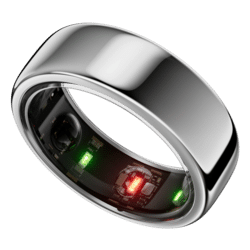
Oura Ring Sleep Tracker
The Oura Ring is a discreet, ring-shaped sleep and wellness tracker designed to offer detailed insights into your sleep, recovery, and overall health. One of its key strengths is its focus on sleep stages, providing a breakdown of light, deep, and REM sleep, as well as a Readiness Score that helps users understand how well their body is recovering. Unlike WHOOP, which is more focused on performance metrics like strain and recovery, Oura takes a more holistic approach, integrating body temperature tracking and daytime activity monitoring.
For those who prioritize an easy-to-wear device with a strong emphasis on sleep quality and long-term wellness, Oura Ring may be the better choice. Its emphasis on sleep stages and overall health makes it a solid alternative to WHOOP, which focuses more on performance optimization.
Pros
Comprehensive Sleep Tracking
Discreet and Comfortable Design
Advanced Health Metrics
Cons
High Upfront Cost
No On-Device Display
Limited Fitness Tracking
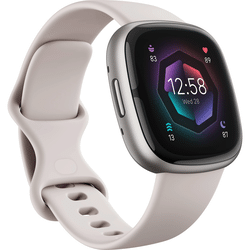
Fitbit Sense 2
The Fitbit Sense 2 is a smartwatch that combines comprehensive fitness tracking with advanced health monitoring, including stress management, heart health insights, and sleep tracking. Its sleep tracking capabilities provide a breakdown of sleep stages (light, deep, REM), along with a Sleep Score to help users understand overall sleep quality.
Unlike WHOOP, which focuses heavily on performance metrics and recovery, the Fitbit Sense 2 offers a broader set of features such as built-in GPS, on-wrist notifications, and stress management tools, making it more suitable for users who want a multi-functional device.
If you’re looking for a device that offers sleep tracking alongside lifestyle features like notifications, built-in GPS, and heart health monitoring, Fitbit Sense 2 might be the better choice. Its sleep tracking is solid but geared more toward general wellness rather than the in-depth recovery and performance insights WHOOP provides.
Pros
Comprehensive Health Monitoring
Integrated Smartwatch Features
Advanced Sleep Tracking
Cons
Battery Life
Subscription for Premium Features
Bulky Design for Sleep
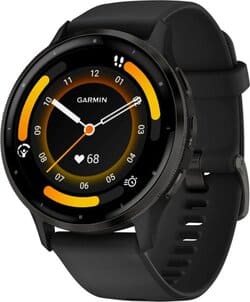
Garmin Venu 3
The Garmin Venu 3 is a feature-packed smartwatch offering a mix of fitness, wellness, and lifestyle tracking. Its sleep tracking includes a breakdown of sleep stages (light, deep, REM), and the Body Battery feature, which tracks energy levels throughout the day. Compared to WHOOP, Garmin Venu 3 provides a more rounded approach, offering additional features like built-in GPS, music storage, and notifications, making it ideal for users who want more than just performance and recovery metrics.
If you’re looking for a device that combines solid sleep tracking with advanced fitness and lifestyle features, the Garmin Venu 3 may be a better choice. While WHOOP focuses on detailed recovery and performance, Garmin Venu 3 offers comprehensive health tracking and sleep insights with added convenience like GPS and smartwatch capabilities.
Pros
Comprehensive Health and Fitness Tracking
On-Screen Workouts and Smart Features
Long Battery Life
Cons
Higher Price Point
Bulky Design
Complexity for Beginners
WHOOP Sleep Tracker Review: Key Takeaways
WHOOP is a top-tier sleep and recovery tracker that excels in delivering detailed insights and personalized feedback for athletes and health-conscious users. It scores highly in areas like sleep tracking accuracy (9/10), additional features (9/10), and app and data visualization (9/10), making it an excellent tool for those focused on optimizing performance and recovery. Its innovative approach to charging, durable build, and low electromagnetic frequencies (EMF) exposure also contribute to its appeal.
However, WHOOP’s subscription-based pricing model and standard customer support options (both scoring 7/10) may deter some users, particularly those seeking a one-time purchase or more robust service options. In terms of comfort (8/10) and battery life (7/10), WHOOP remains competitive but doesn’t outshine all its competitors, especially for users who prioritize long-lasting battery life or non-wrist-based wearables.
Overall, WHOOP is a leader in the sleep tracker market, particularly for those looking for in-depth recovery metrics and seamless, continuous tracking, earning an impressive score across multiple key metrics.

Overall Score
8 out of 10 ?
Accuracy of Sleep Tracking
9 out of 10
Comfort & Wearability
8 out of 10
Battery Life
7 out of 10
App & Data Visualization Quality
9 out of 10
Price-Value Ratio
7 out of 10
Additional Features
9 out of 10
Durability & Build Quality
8 out of 10
Electromagnetic Frequencies (EMFs) Exposure
WHOOP Sleep Tracker
WHOOP is an excellent option for those serious about tracking their sleep, recovery, and overall performance. If you’re an athlete, fitness enthusiast, or simply someone who values detailed health insights, WHOOP offers a level of depth that sets it apart from general sleep and fitness trackers. Its focus on continuous monitoring and delivering data-driven feedback helps you make more informed decisions about your workouts and recovery, ensuring you’re optimizing your health and performance every day.
That said, WHOOP’s subscription-based pricing model may be something to consider. While the standard device itself is free with the subscription, the ongoing cost can add up, so it’s important to weigh the value of the insights it provides for your personal goals. If you’re looking for a one-time purchase with basic tracking features, other devices might be a better fit. However, if you’re seeking advanced data, personalized recovery metrics, and a focus on long-term wellness, WHOOP is well worth the investment.
Pros
Accurate Sleep and Recovery Tracking
24/7 Continuous Monitoring
Unique Strain and Recovery Metrics
Comfortable, Lightweight Design
Low EMF Exposure
Cons
Subscription-Based Pricing Model
No Display or Lifestyle Features
Shorter Battery Life
Limited Customer Support Options
Minimal Aesthetic Customization
WHOOP Sleep Tracker FAQs: Your Top Questions Answered
How accurate is WHOOP for sleep tracking?
The WHOOP sleep tracker is highly accurate in tracking sleep stages and recovery. It continuously monitors your heart rate, respiratory rate, and heart rate variability (HRV) to provide insights into sleep quality. It excels in tracking overall sleep performance and recovery, offering valuable data for athletes and health-conscious individuals. However, it provides an average HRV for the night rather than a detailed graph throughout the night, which some competitors like the Oura Ring do better.
Does WHOOP require a subscription?
Yes, WHOOP operates on a subscription model, which provides access to the strap and all its data analytics features. The subscription fee starts at $30 per month, and this gives you continuous access to the WHOOP app, where all your data is synced and analyzed. While the subscription adds ongoing costs, it ensures access to the latest features without needing to upgrade the device itself.
Can WHOOP be used without intense workouts?
Absolutely. WHOOP is designed not only for athletes but for anyone interested in tracking their overall health, recovery, and sleep quality. Even if you don’t engage in intense exercise, WHOOP can help monitor your daily activity, sleep, and recovery to optimize your energy levels and well-being.
How long does the battery last, and how is it charged?
WHOOP offers around 4-5 days of battery life. One unique feature is that you can charge the device without taking it off. It comes with a portable battery pack that slides over the strap, allowing you to keep tracking your data even while charging.
What makes WHOOP different from other trackers like the Apple Watch or Fitbit?
WHOOP stands out by focusing on sleep, recovery, and performance metrics, rather than general fitness tracking. It has no screen and minimal lifestyle features, such as notifications or GPS. Instead, it prioritizes data accuracy for recovery and strain, offering detailed insights into your body’s readiness to train. It’s tailored more for recovery optimization than lifestyle convenience, unlike devices such as the Apple Watch or Fitbit.
Stone Evans, Founder of SleepCoaching.com
Stone Evans is the founder of SleepCoaching.com which has become one of the most popular destinations online for people seeking better sleep. Stone started developing this website after realizing his own sleep struggles and then beginning an intensive period of study (which included professional sleep coach training) and ongoing lifestyle changes to improve and optimize his sleep.
Now through in-depth articles from sleep experts around the world, the internet's leading and most comprehensive sleep coaching directory, quantitative sleep product reviews and Stone's personal daily sleep tracking journey, visitors to our website regularly report gaining information and insights that are helping them achieve better health, better sleep and a better quality of life.
